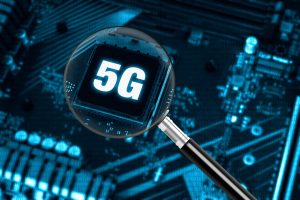The Trump administration implemented a series of policies to accelerate the deployment of 5G technology across the United States, emphasizing economic growth, national security, and technological leadership. The administration prioritized the rapid rollout of 5G networks, recognizing their potential to revolutionize various sectors. Key initiatives included:
- Spectrum Allocation: The Federal Communications Commission (FCC), with support from the administration, freed up over 5,000 megahertz of spectrum for 5G use, surpassing other nations in spectrum availability. This effort aimed to ensure that the U.S. led in 5G readiness.
- Regulatory Reforms: Efforts were made to remove regulatory barriers hindering 5G infrastructure development. The FCC streamlined the permitting process in collaboration with state and local governments to facilitate quicker deployment.
- Private Sector Investment: The administration’s policies encouraged significant private sector investment in 5G technology. The wireless industry projected investments totaling $275 billion, potentially creating 3 million jobs and adding $500 billion to the economy.
National Strategy to Secure 5G
To address security concerns associated with 5G networks, the administration released the National Strategy to Secure 5G in March 2020. This strategy focused on:
-
Risk Assessment: Identifying and mitigating cybersecurity risks associated with 5G infrastructure to protect national security and economic interests.
-
Global Collaboration: Working with international partners to promote the adoption of secure and reliable 5G infrastructure worldwide.
The Clean Network Initiative
To safeguard critical telecommunications infrastructure, the administration launched the Clean Network initiative. This program aimed to:
-
Exclude Untrusted Vendors: To protect against potential espionage and data breaches, prevent the use of equipment from untrusted IT vendors in U.S. 5G networks.
-
Secure Communication Paths: Ensure that data transmitted over 5G networks remains secure and free from foreign interference.
Challenges and Criticisms
Despite these efforts, the administration faced several challenges:
-
Interagency Coordination: The rollout of 5G encountered issues due to inadequate coordination between federal agencies. For instance, concerns about 5G signals interfering with aviation equipment led to delays and highlighted the need for better interagency communication.
-
Spectrum Allocation Conflicts: Efforts to reallocate spectrum from the Department of Defense for commercial 5G use met resistance, underscoring the complexity of balancing national security with technological advancement.
The Trump administration’s 5G policy aimed to position the United States at the forefront of global telecommunications by promoting rapid deployment, securing infrastructure, and encouraging private investment. While significant progress was made, interagency coordination and spectrum management challenges highlighted the complexities inherent in deploying next-generation technologies.



